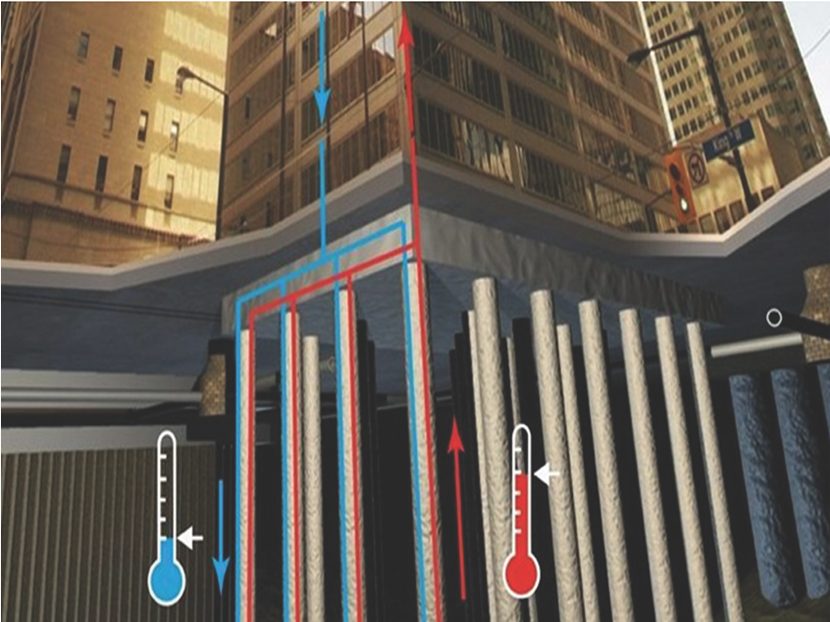Solid Geothermal Reasoning
There is a long list of benefits that geothermal systems can provide.

While there are mechanical and HVAC systems that we are asked to “value-engineer,” many HVAC systems are installed for owners that are in this for a long-term investment. Let’s talk about the latter; this is an important topic on new-builds and retrofits, and it will be obvious why an increasing number of owners are choosing geothermal sourced HVAC systems.
When a client is building new, and wants to ensure a long-lasting, nearly tamper-proof system, they find that geothermal provides a long list of benefits that simply are not available in standard chiller plants or direct-expansion systems. Geothermal HVAC systems eliminate the need for cooling towers, outside condensers, and most other equipment that can clutter rooftops, or need to be placed outside the building. Outside equipment tends to be loud and maintenance-intensive.
Most of the maintenance and service dollars are expended on cooling towers and outside equipment. Inside equipment tends to run better, because it’s protected from the elements. Cooling towers are labor-intensive, and with the recent CDC findings, quite a health and human safety risk. With the new data from the CDC on risks, many may choose geothermal to be insulated from such a liability as the threat of Legionnaires’ disease from infected cooling towers.
Government buildings use geothermal sourced HVAC systems for many of the reasons alluded to above. Some reasons that are not so obvious have to do with security. In an emergency event, having the equipment all-inside in a secured building makes the building more tamper-proof. Emergency Operations Centers (EOCs) and other government and Federal buildings are making the switch just for the security risk, and are finding tremendous bonuses of longevity and security.
When an owner has equipment that is at the sunset of its lifespan, there lies a good opportunity for an upgrade. A good opportunity for switching to geothermal is at the point when the cooling towers have been budgeted for replacement. While chillers often last for 30 years, it is common for cooling towers to last fewer than 15 years. When comparing the cost of new cooling towers, an assessment can be made that includes some of the other costs sometimes not considered. These include:
• Water consumption
• Chemicals
• Maintenance costs
• Energy savings
• Health and human safety (Legionella threats)
By comparing the costs of cooling tower replacement with the new geothermal source, the attractiveness improves. Then, considering the other items listed above, the choice becomes easy.
A building’s HVAC system is crucial to its continued operation. Lack of cooling and ventilation will make the building uninhabitable for humans and servers and computers. Placing the building on a geothermal sourced heat exchanger is permanent infrastructure, and can be expected to last as long or even longer that the very walls and foundation of a building. As a matter of fact, geothermal exchangers are becoming increasingly used in conjunction with building piles called “geothermal piles.”
Every owner that is invested in their building would choose geothermal, if they had some solid geothermal reasoning. Put it to the test as you first offering for new-builds and for replacement/upgrades.
If you’ve never specified geothermal, don’t worry. Just contact the International Ground Source Heat Pump Association (IGSHPA) on its website and search for local professionals in your area that will help you to spec geothermal on your next project. Then get trained; you’ll be amazed at the opportunities.





